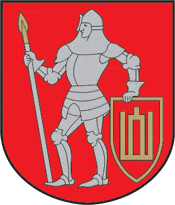Trakai

City: Trakai
Country: Republic of Lithuania
Address: Trakų Rajono Savivaldybės Meras Vytauto g.33 Trakai, LT-21106 LITHUANIA
Official page: trakai.lt
Cooperation agreement: 09.11.2006
Trakai is a small town in Lithuania with a population of 7,000. In Lithuania, there are two settlements called "Trakai": "New" Trakai, founded by Grand Duke Yaroslav I the Wise in 1045, and "Old" Trakai, founded by Gediminas - monarch of the Grand Duchy of Lithuania in the late thirteenth century. The linear distance from Ivano-Frankivsk to Trakai is 638 km.
The city of Trakai and its environs began to develop in the XIII century. as the administrative center of the Grand Duchy of Lithuania. At the beginning of the XV century, in 1409, Grand Duke Vytautas granted Trakai the Magdeburg right to self-government. According to chronicles, Grand Duke Gediminas, after a successful hunt, found a beautiful place near Kernave and decided to build a castle on it. This is how Trakai Castle appeared. Trakai Castle is the largest of the ancient castles preserved in Lithuania. He was the most powerful and majestic in the entire Grand Duchy of Lithuania. It was one of the most impregnable fortresses in all of Eastern Europe: never in its history have enemies succeeded in conquering it. The main castle immediately became the main residence of Grand Duke Vytautas. After the Battle of Grunwald in July 1410, the castle lost its military purpose. At that time the castle was experiencing a period of prosperity. Luxurious receptions and balls were held in honor of foreign ambassadors and dignitaries who came to the castle from all over Europe.
By the end of the 16th century, Trakai was gradually receding into the background of the country's political life. Its location away from trade routes led to economic decline. Later, Trakai became a place of exile for the nobility, and the castle was used as a prison.
In the XVI century, Trakai finally lost its political and economic significance. During the war with Russia (XVII century), the city was looted, burned, castles destroyed. In the XVII-XIX centuries, Trakai was an ordinary county town of Vilna province. In the second half of the XX century, the island castle has been restored. Since 1962, the castle houses a historical museum. In summer, the Island Castle hosts festivals and concerts.
The old town of Trakai is one of the five old cities protected by the state. In the eastern part of the city, on Karaimov Street, a block of wooden one-story houses has been preserved - the value of urban planning in Trakai. The houses face the street through three windows: one to God, the other to Vytautas, and the third to himself. The Karaite community made a great contribution to the development of the city. Brought to the end of the XIV century in Trakai, the Karaites have deep roots here. It is believed that the Karaites and Tatars were brought here by Grand Duke Vytautas after a campaign on the Crimean peninsula. In Trakai, there is a kenassa - a Karaite prayer room. The Trakai Karaites have preserved their language and script to this day.